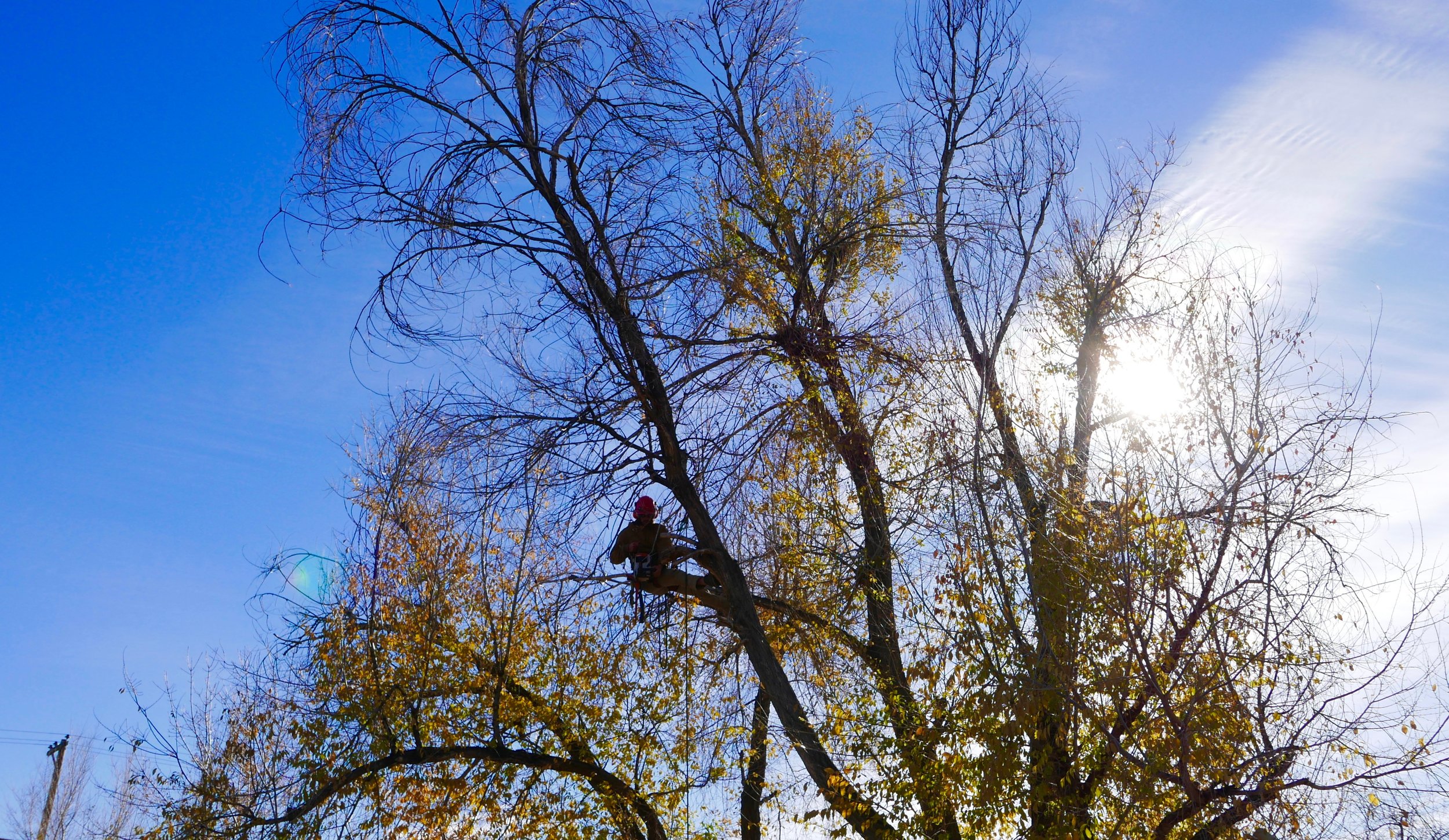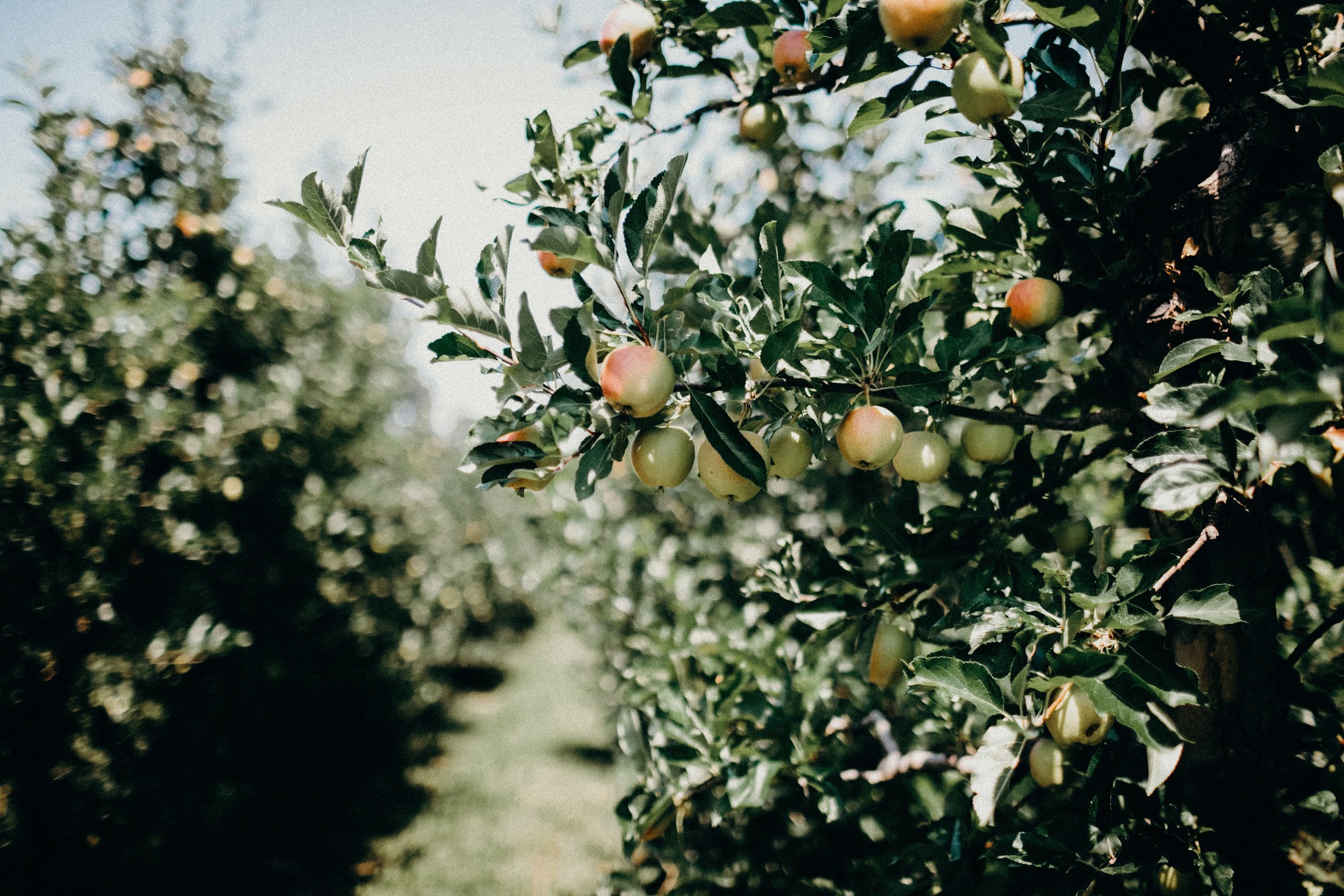
Selection & Planting
We can consult on best tree species and planting location for your site, source quality specimens for you, deliver and plant them for optimal success.
Diagnosis & Consultation
Schedule a consultation for tree care instruction, diagnosis, and long term planning.
Pruning & Removal
Pruning by a skilled arborist will prolong the life and health of your trees, making them both more sturdy and more beautiful.
Mulch/Woodchips
We are producing high-quality wood mulch almost daily. Please read our FAQ below for details and to request info or delivery.
Wildfire Mitigation
Consulting and implementing more fire-resistant landscapes while encouraging healthy trees.
Questions? Find answers Below or contact us.
FAQ: Tree Care
Why do trees need to be pruned? Didn’t they evolve without pruning?
In a forest, trees grow close to other trees on all sides receiving shelter from damaging wind and support by way of branches and roots that interlock with neighbors. In urban landscapes trees have much more room to spread out making them even more vulnerable to wind and snow load. When trees are damaged in wild lands they can still leaf out and produce seeds - this is all evolution requires. If a tree is disfigured by storm damage in our landscape Its a real loss because we devote decades to fostering beautiful trees. A skilled arborist can use pruning to guide a tree to beautiful form and sound structure.
How often should I water my tree?
A rule of thumb is: More water, less often, but it depends on what kind of tree it is, what kind of soil you have, and whether or not the tree is established (establishment is the period of time during which a new tree re-grows the root mass which was lost during transplantation). In general terms, a tree needs a longer drink/breathe cycle than turf or perennials. When water is applied to the soil, the space between soil particles fills up with water and the trees roots drink. When the water percolates down, evaporates, and is absorbed by plants' roots, air is pulled into the pore space to replace the water, and the roots breathe. This cycle is called the “drink/breathe cycle.”
What is fire blight?
Fire blight is a bacterial infection that can potentially affect all members of the rose family including all of our fruit trees in Colorado - most commonly, apples, crabapples, hawthorns, pyracantha, and pears.
What kind of trees should I plant?
In general you want to diversify as much as possible, so plant something you don’t have yet and don’t plant more than one of anything. This will make your landscape more secure because most bugs are “host specific” meaning they only eat on type of tree, for example: ashes. This question goes to the heart of what we call “selection” which is all about selecting the right tree for the right place. Things to consider are mature height, spread, shape, and purpose, such as, providing spring color, fall color, screening, and attracting wildlife.
When should I plant trees?
The best time to plant trees is in the spring or in the fall.
Where should I buy new trees?
Harlequin Gardens, as they carry only the varieties best suited for the unique climate of the Front Range. Arbor Vital can help you choose the best species and specimens; deliver and plant trees for you.
Is my ash tree going to die?
Almost certainly, if it’s not treated for the emerald ash borer.
Do you treat for Emerald Ash Borer?
Yes. If you have a highly desirable specimen of Ash tree that you would like to save, we highly recommend and will subcontract for TreeAzin EAB treatment. TreeAzin is a formulation of Neem Tree seed extract which is injected into Ash trunks in late spring through mid-summer. The important difference between this treatment and other treatments is that it is completely bee-safe.
What are neonics, and do you use them?
Neonicotinoids (neonics, for short) are a systemic pesticide that leaves all parts of a plant poison to insects. They are originally derived from a naturally occurring toxin in tobacco, hence the name. Unfortunately, neonics are not able to target only the harmful insects, but also kill or undermine the health of honey bees, wild bees, butterflies, beneficial insects, ladybugs, earthworms, etc. For this reason, Arbor Vital does not use neonics.
FAQ: Working with Us
Are You The Same Company As We Love Trees?
Arbor Vital Tree Care and We Love Trees merged in November 2023. David Schaldach will continue to work with his clients, who will now also benefit from the excellent services and skills of the We Love Trees team. You can read more about the merger on our blog.
What is a Certified Arborist?
An International Society of Arboriculture (ISA) Certified Arborist is an individual who has achieved a level of knowledge in the art and science of tree care. This knowledge is tested by the ISA in a comprehensive examination. Furthermore, in order to maintain the certification an individual must complete professional development courses or retest at a regular interval.
What geographic area do you serve?
Boulder, Lafayette, Louisville and Niwot. If you are in a nearby location not listed above, reach out and we'll let you know if we can serve you.
Do you carry liability insurance as well as workmen’s compensation for your staff?
Yes, absolutely! Both.
Do you care for shrubs or other kinds of plants?
Yes, we specialize in the care of ‘woody plants’ including trees, shrubs, and vines.
Can you plant trees and shrubs for me?
Yes, we can plant or transplant for you. We can also select trees, choosing the optimum specimens from a reliable nursery and deliver to you.
How is a consultation different from a free quote?
A Quote is a conversation and written recommendation specifically about work to be done and including prices to complete the work.
A Consultation is a longer more detailed conversation about any and all topics related to your trees which may or may not pertain to future tree work. Topics may include: diagnosis, watering, selection, planting, mitigating construction impact, landscape planning, identification. Consultations are $100/ hour and fees can be waived for clients who order $1,000. worth of work.
What do you do with the debris after pruning/removal?
The wood is made available to our customers and the general public in a variety of forms.
Do you use neonictinoids or other toxins?
No.
FAQ: Firewood & Mulch
How much does your mulch cost and will you deliver?
If we are working on-site for you, woodchip mulch can be left in a pre-designated location. We deliver woodchip mulch to our clients and neighbors year-round, but the demand for mulch varies depending on the season, spring and summer being the high season.
In the fall and winter we deliver full loads (4 - 5.5 cubic yards) for free. For smaller loads we may charge a $20 delivery/handling fee. In spring and summer when we usually have a long list of mulch requests to fill, we fulfil paid requests first so that if you have a landscaping project to get done or you have labor lined-up you can make plans. Conversely, If you’re not in a hurry you don’t have to pay.
When demand is slow we fulfil most requests in a week or so. When demand is high the only promise we can make is: if we have all your information we will get to you eventually. “All your information” means your name, address, phone number, and exactly where on your property you want your mulch dumped (i.e. on the driveway all the way to the back, on the street just north of the driveway) etc.
What kind of woodchips do you have?
Like our firewood, our woodchip mulch is gleaned from urban tree care operations and contains an assortment of hard and softwood, as well as brush and shrubbery.
What kind of firewood do you have + what does it cost?
At this time we are not taking any new orders for firewood. When that changes, we will update this website.





